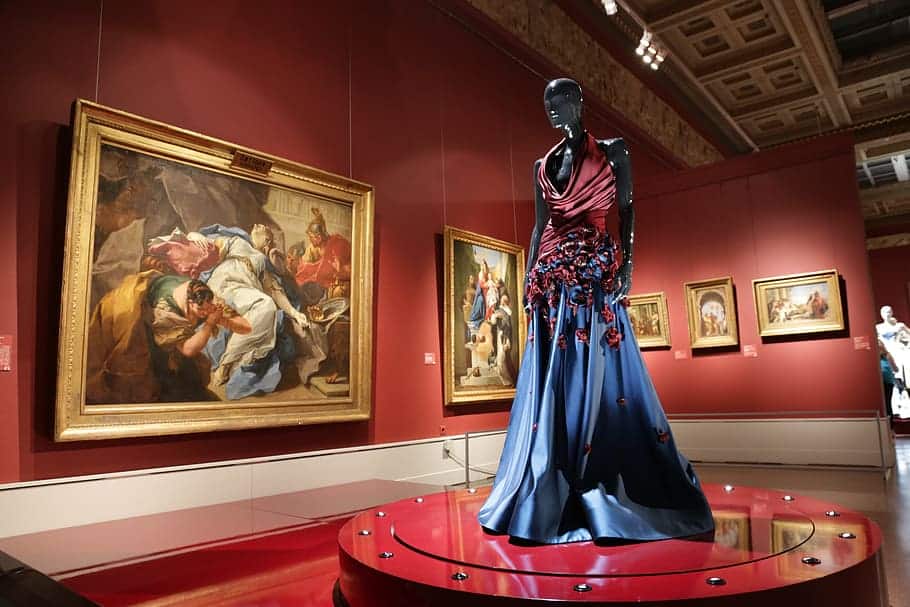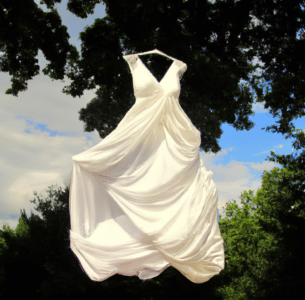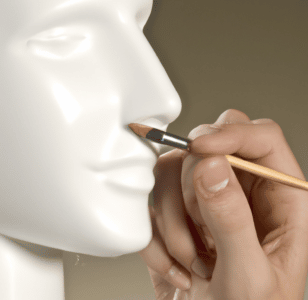Mannequins don’t have to stay the way they were born. Whether you want a quirky green alien, a bronze Oscar-esque display, or to restore a vintage mannequin to its former glory, you can achieve all of these looks and more with the use of paint.
Customising your mannequins can make your display stand out from the crowd and even give your business an edge over competitors. If you’re looking for a new mannequin to decorate, check out our range of display mannequins and dress forms available from The Mannequin Shop.
Before painting a mannequin, the most important thing is to choose a paint designed for the surface you are working on – whether that’s fibreglass, polypropylene, foam, or fabric. Using paint not meant for your material can lead to less-than-desirable results. No one wants to see cracked, flaky mannequin skin – unless, perhaps, it’s for a Halloween display.
If you’re unsure what kind of paint to use on a mannequin and where to start, we’re here to help with our beginner’s guide to painting a mannequin.
Types of mannequin paint
To paint a mannequin effectively, you’re going to need more than one type of paint. The most essential is a suitable spray paint in the colour that you would like the mannequin, which will allow you to cover the bulk of the skin easily. If you want to add details and facial features, you will also need suitable brush-on paints.
Additionally, you will require a satin-finish sealant, to seal the paint and ensure a good finish on your mannequin, and a brush-on gloss, if you want to add any additional highlighting.
Best mannequin spray paints
When selecting your mannequin spray paint, make sure it is suitable for the material. For example, for our polypropylene display mannequins, you’ll want to use spray paints that are recommended for use on plastic. Here are some options:
1. Dulux Duramax Plastic Primer
To ensure the best finish on your mannequin, it can be a good idea to apply a coat of primer first. This ensures the spray paint has the best chance of adhering to the surface. Dulux’s fast-drying Duramax primer provides a high-performance undercoat and is suitable for use on most hard plastics.
2. Rust-oleum 2X Ultra Cover Paint+Primer
Rust-oleum is one of the leading brands of affordable spray paints and is suitable for a range of surfaces, including plastic. This 2X formula offers twice the coverage with each coat, for quick and easy application. It’s available in a range of colours and finishes, from Black and Rose Gold to Deep Teal and Real Orange, so you can create a wide variety of looks.
3. Dy-Mark Acrylic Spray Paint
This water-based acrylic paint by Dy-mark will leave your mannequin with an attractive high-gloss finish. Choose from a selection of bright colours, including Wildfire Red, Grassy Green, and Electric Purple. The paint has a low VOC content, odour, and toxicity, so it’s safer to use. For best results, apply a primer first.
Other equipment you’ll need
– Soap, water, and rags
– Fine-grade sandpaper
– Paintbrushes
– Old clothing, gloves, and a face mask
How to paint a mannequin
The first step in painting your mannequin is to disassemble it. Then, run the sandpaper over the limbs, to buff the existing gloss and help the new paint adhere to it. Clean the surface with soap and water to remove any dust and grime, and allow to dry. Cover the surrounding area and prepare yourself by putting on your old clothing, face mask, and gloves.
To paint your mannequin’s skin in a block colour, hold the spray can slightly away from the surface and apply the paint thinly and evenly, allowing it to dry fully between coats – two should be sufficient. Finish with a layer of satin sealant to seal the colour.
Once this is dry, use a brush to add any details you want on your painted mannequin. For traditional display mannequins, you may want to add facial hair, make-up, or nail varnish, to humanise them. If you’re going for a more ‘out there’ look, you could add anything from abstract art to a third eye – get creative!
Once you’re happy with the appearance of your mannequin and the newly painted areas have dried, apply another layer of the spray-on satin sealant. Use the brush-on gloss to accentuate any areas of the face that should be shinier, such as the eyes and lips – this will make your mannequin look more realistic.
Once everything is fully dry (this may take a day or more), reassemble your mannequin. Now comes the fun part; it is time for you to dress, pose and display it with pride!
FAQs
Can I paint a mannequin?
Yes! Painting a mannequin is akin to painting a doll. As long as you use paint suitable for the surface, it is possible to change the colour of your mannequin, and add any details you like.
Can you recommend what kind of paint to use on a mannequin for best results?
When painting a mannequin, we recommend purchasing acrylic spray paint, suitable for use on plastic. This will allow you to cover the surface quickly, and give a good finish. For detailing, use acrylic paint applied with a paintbrush.
How should I prepare for painting a mannequin?
Unless you want the area to look like the scene of a mannequin massacre, you should lay newspaper or plastic sheeting on the floor, and cover any nearby furniture. Prepare yourself by putting on clothing you don’t mind getting spoiled, and use gloves and a face mask to protect yourself from fumes. Ideally, opt to paint your mannequin outside, but if you have to work inside, make sure the room is well-ventilated.
Are there any other options to painting a mannequin myself?
If you’re not feeling confident about your mannequin spray painting skills, you could look to enlist the services of a specialist mannequin restoration or automotive body painting facility, which should be familiar with painting on plastics. However, we strongly encourage you to have a go at painting your mannequin yourself – it can be a lot of fun!




I am an a.artist and have painted a mannequin with paintpens but have been looking for other techniques to paint them and I have found this article very helpful. Tank you